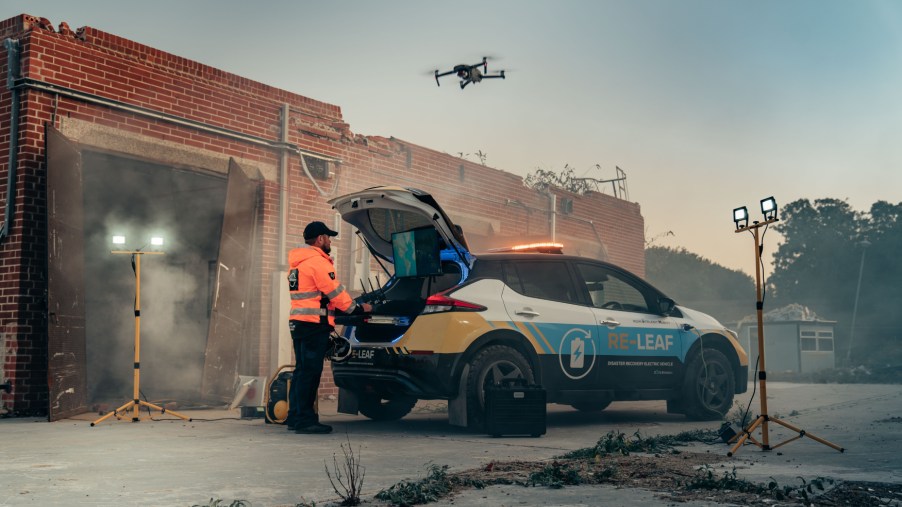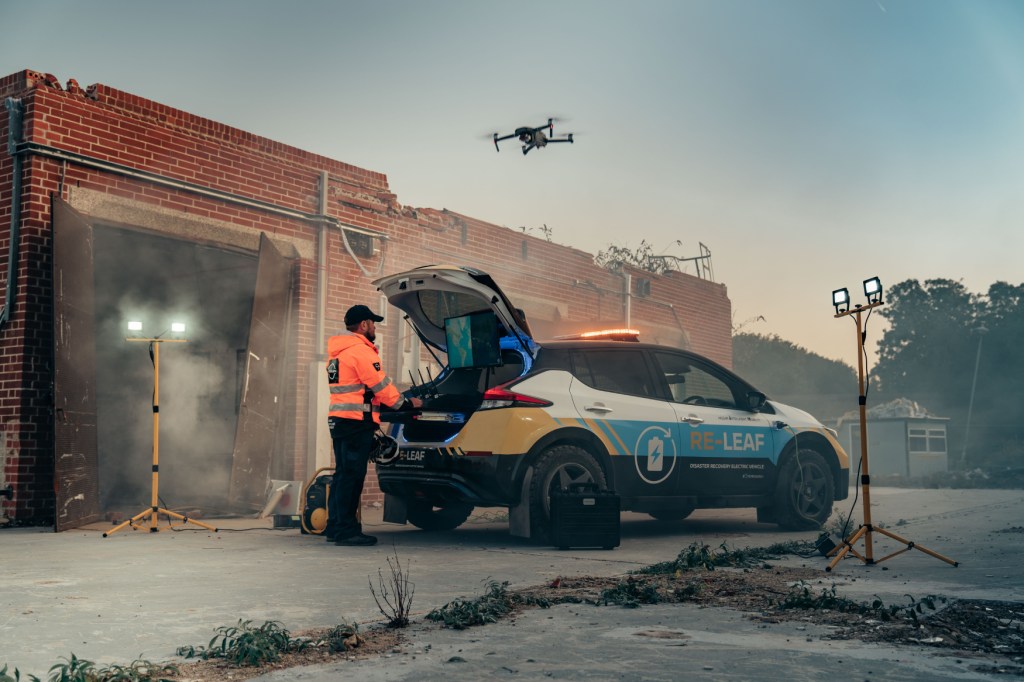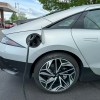
Meet the Nissan Re-Leaf: An Emergency Response EV
The Nissan Re-Leaf is more than just a clever pun. The forward-thinking engineers at Nissan have developed a vehicle that assists emergency responders while being as environmentally friendly as possible.
The Nissan Leaf debuted in 2010 to critical acclaim, having won the 2010 Green Car Vision Award and 2011 World Car of the Year. But despite being one of the most recognizable EVs on the market, you hardly see these cars on every street corner – at least in the U.S. However, Nissan is finding other ways to get this innovative, eco-conscious machine out in the world.
A Nissan press release unveiled a working prototype of the Nissan Re-Leaf. The goal of this fully electric emergency response vehicle is to be a mobile power supply unit. The manufacturer envisions this small electric car providing assistance after natural disasters or during extreme weather situations.
“We’re constantly exploring ways that electric vehicles can enrich our lives, beyond just zero-emission transportation,” said Helen Perry, head of electric passenger cars and infrastructure for Nissan in Europe, via the press release. “Concepts like the Re-Leaf show the possible application of EVs in disaster management and demonstrate that smarter, cleaner technology can help save lives and provide greater resilience.”
Innovative vehicle modifications

The Nissan Re-Leaf isn’t just built to respond to a disaster after it happens. It’s also equipped to assist during extreme scenarios.
This prototype is based on the Nissan Leaf e+ platform, which features a 62 kWh battery and gets an EPA-estimated 118 MPGe city. Nissan’s engineers raised the vehicle’s height by 70 inches and added a ‘sump guard’ to help avoid and protect the car from debris on disaster-struck roads. Meanwhile, an LED light bar is mounted to the roof to alert others of its presence. Nissan has exercised care and precision for these added features, clearly working to adapt this vehicle to serve a much-needed function during a crisis event.
Additionally, one of the most significant benefits to the Nissan Re-Leaf is its compact size. It can maneuver quickly and efficiently where other rescue vehicles may otherwise encounter obstacles.
How the Nissan Re-Leaf assists responders during a disaster
This small car is outfitted with a pair of weatherproof plug sockets and an internal socket, allowing emergency responders to power up 110- or 230-volt equipment in the middle of heavy rain. It can even provide power to several devices at once, including medical ventilators, floodlights, and jackhammers.
Nissan says this EV is capable of powering more than just emergency response equipment. This vehicle can also supply electricity to homes. The automotive manufacturer launched an energy-distribution concept called Nissan Energy Share. This program encourages the use of EVs as mobile storage batteries, which can be used as a means of local energy production to help power people’s everyday lifestyles.
The future of the Nissan Leaf
Whether the Nissan Leaf is ahead of its time is yet to be determined. However, Nissan is committed to making sure the Leaf platform does as much good for the world as possible – by way of eco-friendly performance and emergency assistance.
It’ll be interesting to see how these Nissan Re-Leaf emergency response EVs can assist in the recovery of future crisis events. Meanwhile, the automotive industry awaits what other practical uses Nissan will have for its Leaf platform.


